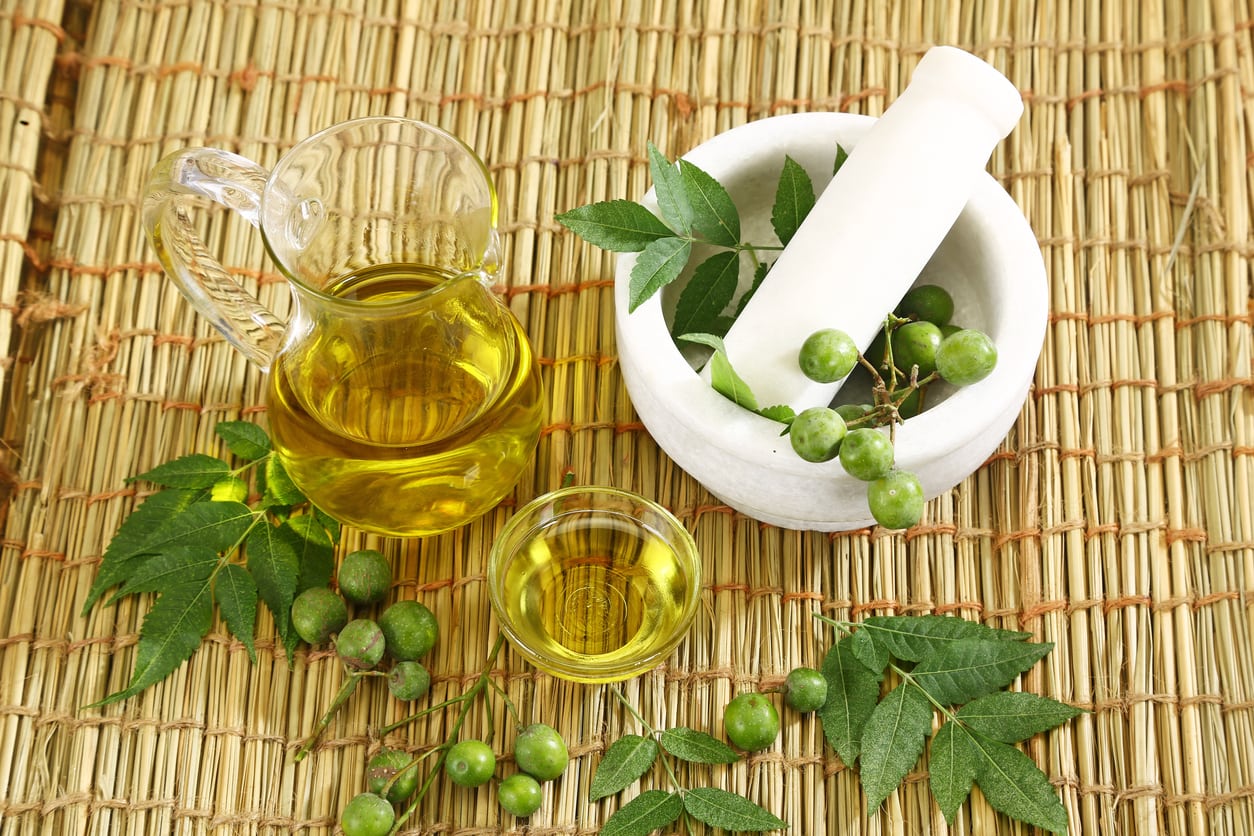Azadirachtin Vs. Neem Oil – Are Azadirachtin And Neem Oil The Same Thing


What is azadirachtin insecticide? Are azadirachtin and neem oil the same? These are two common questions for gardeners seeking organic or less toxic solutions to pest control. Let’s explore the relationship between neem oil and azadirachtin insecticide in the garden.
Are Azadirachtin and Neem Oil the Same?
Neem oil and azadirachtin aren’t the same, but the two are closely related. Both come from the neem tree, native to India but now grown in warm climates around the world. Both substances are effective for repelling and killing insect pests and also interfere with feeding, mating, and egg laying. Both are safe for humans, wildlife, and the environment when used properly. Bees and other pollinators are also unharmed. However, neem oil and azadirachtin insecticide may be slightly to moderately harmful to fish and aquatic mammals. Neem oil is a mixture of several components, many of which have insecticidal qualities. Azadirachtin, a substance extracted from neem seeds, is the primary insecticidal compound found in neem oil.
Azadirachtin vs. Neem Oil
Azadirachtin has proven to be effective against at least 200 insect species, including common pests such as:
Some growers prefer to alternate azadirachtin with other pesticides because doing so decreases the risk that pests will become resistant to frequently used chemical pesticides. Azadirachtin is available in sprays, cakes, water-soluble powder, and as a soil drench. When azadirachtin is extracted from neem oil, the substance left over is known as clarified hydrophobic extract of neem oil, commonly known simply as neem oil or neem oil extract. Neem oil extract contains a lower concentration of azadirachtin, and is less effective against insects. However, unlike azadirachtin, neem oil is effective not only for insect control, but is also effective against rust, powdery mildew, sooty mold, and other fungal diseases. Non-insecticidal neem oil is sometimes incorporated into soaps, toothpaste, cosmetics, and medicine. Sources for information: http://gpnmag.com/wp-content/uploads/GPNNov_Dr.Bugs_.pdf http://pmep.cce.cornell.edu/profiles/extoxnet/24d-captan/azadirachtin-ext.html http://ipm.uconn.edu/documents/raw2/Neem%20Based%20Insecticides/Neem%20Based%20Insecticides.php?aid=152 https://cals.arizona.edu/yavapai/anr/hort/byg/archive/neem.html
Gardening tips, videos, info and more delivered right to your inbox!
Sign up for the Gardening Know How newsletter today and receive a free copy of our e-book "How to Grow Delicious Tomatoes".

A Credentialed Garden Writer, Mary H. Dyer was with Gardening Know How in the very beginning, publishing articles as early as 2007.
-
 Get Ready For A Summer Of Hummers! Grow These Full Sun Hummingbird Plants and Flowers
Get Ready For A Summer Of Hummers! Grow These Full Sun Hummingbird Plants and FlowersIf you’re lucky enough to enjoy a sunny backyard, make sure you are maxing out on your pollinator opportunities and grow these full sun hummingbird plants and flowers
By Tonya Barnett
-
 12 Lush Alternatives To A Lawn For Sustainable Spaces
12 Lush Alternatives To A Lawn For Sustainable SpacesAlternatives to a lawn are beautiful and also beneficial to your local ecosystem and its pollinators. Explore our top picks for plants to replace grass.
By Tonya Barnett